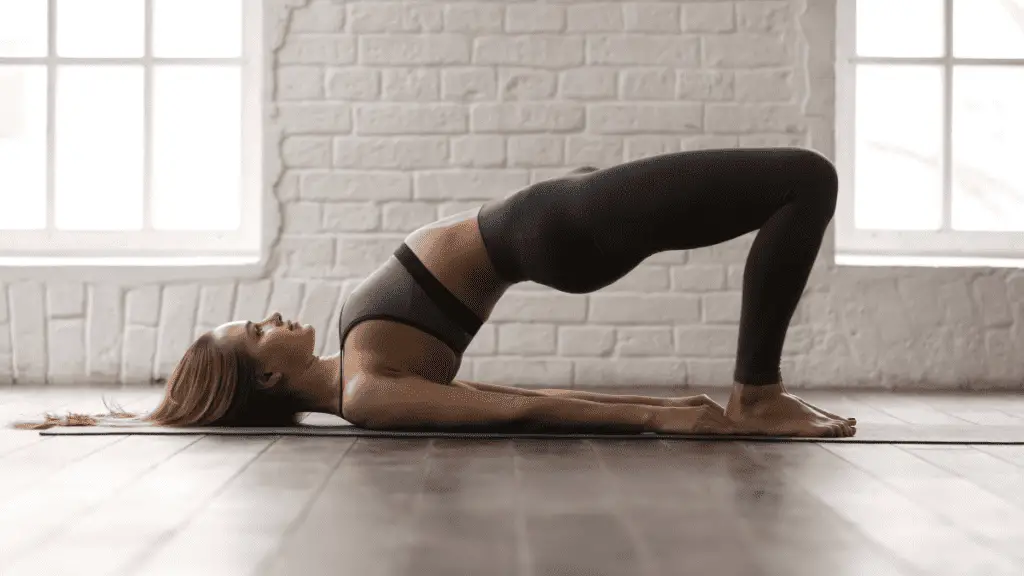
Are you looking for the best exercises to strengthen your lower back and improve your overall fitness? Look no further! In this article, I will share with you the top exercises that target the key muscles responsible for lower back strength and stability. These exercises are not only effective but also easy to incorporate into your workout routine. Get ready to strengthen your lower back and enhance your physical well-being!
Key Takeaways:
- Glute bridges and bird-dogs are effective exercises that target the gluteus muscles, back extensors, and abdominal muscles, enhancing lower back stability and strength.
- Planks and side planks engage multiple muscle groups, including the core, arms, shoulders, and back extensor muscles, promoting overall stability and supporting the lower back.
- The abdominal drawing-in maneuver and back extensions strengthen the core muscles, which provide crucial support to the lower back and help prevent back pain.
- Incorporating lower back stretching exercises into your routine can help improve flexibility, relieve muscle tension, and reduce back pain.
- By regularly performing these exercises, you can enhance your lower back strength, improve posture, and reduce the risk of lower back pain and injuries.
Now, let’s dive into the details of each exercise and discover how they can benefit your lower back. Get ready to take your fitness journey to the next level!
Glute Bridge

The glute bridge exercise is a highly effective way to target and strengthen the muscles in your lower back. By specifically engaging the gluteus maximus, the largest muscle in the gluteal region, you can promote stability and support throughout your lower back.
To perform the glute bridge, start by lying on your back with your knees bent and your feet flat on the floor. Position your feet hip-width apart. Engage your core and begin by lifting your pelvis off the floor, and pushing through your heels. Continue until your body forms a straight line from your shoulders to your knees. Hold for a moment and then carefully lower your pelvis back down to the starting position. Repeat this exercise 10-15 times to effectively strengthen your lower back muscles.
| Benefits of the Glute Bridge Exercise |
|---|
| Strengthens the gluteus maximus, a key muscle for lower back support |
| Promotes stability and alignment throughout the lower back |
| Helps prevent lower back pain and injuries |
| Improves overall posture and balance |
Remember to maintain proper form and engage your glute muscles throughout the exercise. Incorporating the glute bridge into your regular workout routine can yield significant improvements in lower back strength and function.
Bird-Dog

The bird-dog exercise is a fantastic way to strengthen your back and improve core stability. It specifically targets the gluteal muscles and back extensor muscles, which play a crucial role in supporting the lower back.
To perform the bird-dog exercise, follow these steps:
- Get down on all fours, ensuring that your hands are directly beneath your shoulders and your knees are directly beneath your hips.
- Keep your spine neutral and engage your core muscles.
- Extend your right arm forward, aligning it with your shoulder.
- Simultaneously, lift your left leg backward, straightening it out behind you.
- Hold this position for 15 seconds, focusing on maintaining balance and stability.
- After 15 seconds, switch sides by extending your left arm forward and lifting your right leg backward.
- Repeat this exercise 5 times on each side.
The bird-dog exercise helps improve not only your balance and stability but also your core strength. Strengthening these muscles is essential for supporting the lower back and preventing back pain.
| Benefits of the Bird-Dog Exercise | Instructions |
|---|---|
| Strengthens the gluteal muscles | Begin on all fours with hands aligned with shoulders and knees aligned with hips. Extend one arm forward while lifting the opposite leg backward. Hold for 15 seconds and switch sides. Repeat 5 times on each side |
| Targets the back extensor muscles | Engage core muscles while maintaining a neutral spine. Extend one arm forward while lifting the opposite leg backward. Hold for 15 seconds and switch sides. Repeat 5 times on each side |
| Improves balance and stability | Focus on maintaining balance and stability throughout the exercise |
| Enhances core strength | Engage the core muscles throughout the exercise to strengthen the abdominal muscles |
Plank

The plank exercise is an excellent way to strengthen your core and improve overall stability. It primarily targets the abdominals but also engages the arms, shoulders, and back extensor muscles. By performing regular planks, you can enhance your core stability, which is essential for supporting the lower back.
To perform a plank, follow these steps:
- Start in a push-up position on the floor, with your forearms resting on the ground.
- Ensure that your elbows are directly below your shoulders and your body forms a straight line from your head to your heels.
- Engage your core muscles by drawing in your belly button toward your spine.
- Hold this position for 10-30 seconds, focusing on maintaining a straight body alignment.
- Repeat the exercise for a total of 5 times.
By incorporating planks into your workout routine, you’ll not only improve your core strength but also enhance the stability of your lower back. Remember to start with shorter holds and gradually increase the duration as your strength improves.
| Benefits of Plank Exercise | How it Helps |
|---|---|
| Improved core stability | Strengthens the abdominal muscles, supporting the lower back |
| Enhanced back strength | Engages the back extensor muscles, promoting a healthy spine |
| Full-body workout | Engages the arms, shoulders, and core, providing overall strength training |
Side Plank

The side plank is an effective exercise for improving hip stability and strengthening the back muscles. It specifically targets the quadratus lumborum, gluteus medius, and tensor fascia lata, which play a vital role in supporting the lower back.
To perform the side plank:
- Lie on one side with your legs stacked on top of each other.
- Place your forearm on the ground, directly beneath your shoulder.
- Engage your core and lift your hips off the ground, creating a straight line from your head to your feet.
- Hold this position for 10-30 seconds, focusing on maintaining stability and proper alignment.
- Repeat the exercise on the other side.
Perform the side plank exercise 5 times on each side to effectively target the hip stabilizing muscles and strengthening your back.
Abdominal Drawing-In Maneuver
The abdominal drawing-in maneuver is a highly effective exercise targeting the transversus abdominis, a deep abdominal muscle that plays a key role in stabilizing the spine. By incorporating this exercise into your routine, you can enhance your core strength and prevent lower back pain.
To perform the abdominal drawing-in maneuver, follow these steps:
- Lie on your back with your knees bent.
- Inhale deeply.
- Exhale while simultaneously tightening your abdominal muscles.
- Draw your belly button toward your spine as you exhale.
- Hold this position for 10 seconds.
- Release and repeat the exercise 10 times.
The abdominal drawing-in maneuver engages the core muscles and improves stability, contributing to a stronger and more resilient lower back. By practicing this exercise regularly, you can cultivate a powerful core and minimize the risk of back pain.
| Benefits of Abdominal Drawing-In Maneuver | Instructions |
|---|---|
| Strengthens the transversus abdominis | 1. Lie on your back with knees bent. 2. Inhale deeply. 3. Exhale while tightening abdominal muscles. 4. Draw bellybutton toward spine. 5. Hold for 10 seconds and release. 6. Repeat 10 times. |
| Improves core strength | 1. Lie on your back with knees bent. 2. Inhale deeply. 3. Exhale while tightening abdominal muscles. 4. Draw bellybutton toward spine. 5. Hold for 10 seconds and release. 6. Repeat 10 times. |
| Prevents lower back pain | 1. Lie on your back with knees bent. 2. Inhale deeply. 3. Exhale while tightening abdominal muscles. 4. Draw bellybutton toward spine. 5. Hold for 10 seconds and release. 6. Repeat 10 times. |
back extensions

Back extensions are an excellent exercise for fortifying the muscles of the lower back, a critical component in spinal support. By concentrating on the erector spinae muscles along the spine, back extensions contribute to the maintenance of a strong and stable lower back, reducing the likelihood of discomfort or pain. To execute back extensions effectively, follow these steps:
- Begin by lying on your stomach with your hands beside your head.
- Keeping your chin tucked in lift your chest up off the floor.
- Engage your core by drawing your belly button towards your spine.
- Exhale and return to a relaxed position.
- Repeat the exercise for a total of 10-15 repetitions.
Remember to maintain control throughout the movement and focus on using your abdominal muscles rather than straining your neck or using momentum.
| Benefits of Abdominal Back Extensions | Instructions |
|---|---|
|
|
Incorporating back extensions into your workout regimen can prove to be a beneficial strategy for fortifying the muscles of your lower back and enhancing spinal support. Attune to your body’s signals, initiate with a manageable number of repetitions, and progressively intensify the exercise as your strength improves. Just as with any exercise, consistency is pivotal for optimal results, so strive to include back extensions as a regular component of your exercise routine.
Lower Back Stretching Exercises
In addition to the strengthening exercises, it’s crucial to incorporate lower back stretching exercises into your routine. These exercises not only improve flexibility but also relieve muscle tension and reduce back pain. By including these stretching exercises in your daily regimen, you can enhance your overall flexibility and promote relaxation in the lower back muscles.
Two effective lower back stretching exercises that you can try are:
- Knee-to-Chest Stretches: Lie on your back with your knees bent and feet flat on the floor. Slowly bring one knee up, clasping your hands around it, and gently pull it towards your chest. Hold the stretch for 20-30 seconds, feeling the stretch in your lower back. Repeat with the other leg. Perform 3 sets on each side.
- Kneeling Back Stretches: Start on all fours, with your hands shoulder-width apart and knees hip-width apart. Keeping your arms extended, slowly sit back onto your heels while stretching your arms forward. Hold the position for 20-30 seconds, feeling the stretch in your lower back. Return to the starting position and repeat the stretch 3 times.
These stretching exercises are effective in elongating the lower back muscles, improving flexibility, and promoting relaxation. Incorporating them into your routine can complement the strengthening exercises and provide holistic care for your lower back.
Conclusion
After exploring various exercises and stretches for the lower back, it is clear that strengthening this area is essential for maintaining a healthy spine and reducing the risk of lower back pain.
Exercises like glute bridges, bird-dogs, planks, and abdominal back extensuions specifically target the muscles that contribute to lower back strength and stability. By regularly incorporating these exercises into your routine, you can improve overall posture and support the spine in everyday activities.
In addition to strengthening, it is important to include lower back stretching exercises to alleviate muscle tension and improve flexibility. Stretching exercises such as knee-to-chest stretches and kneeling back stretches can help to elongate the lower back muscles and promote relaxation, reducing the likelihood of pain and injury.
Remember, consistency is key. Stick to a regular exercise regimen that includes both strengthening and stretching exercises for the lower back to maximize the benefits. By doing so, you can enhance your lower back strength, maintain a healthy spine, and enjoy a life free from lower back pain.
FAQ
What are the best exercises to strengthen the lower back?
Some of the best exercises to strengthen the lower back include glute bridges, bird-dogs, planks, and back extensions. These exercises target the gluteus muscles, back extensors, and abdominal muscles, which are important for lower back stability and strength.
How do I perform the glute bridge exercise?
To perform the glute bridge, lie on your back with the knees bent and the feet flat on the floor. Lift the pelvis off the floor, forming a straight line from the shoulders to the knees. Repeat this exercise 10-15 times.
What is the bird-dog exercise and how does it strengthen the lower back?
The bird-dog exercise is performed on all fours and involves extending the right arm forward while lifting the left leg backward. This exercise targets the gluteal muscles and back extensor muscles, improving balance, stability, and core strength, which are essential for supporting the lower back. Repeat this exercise 5 times on each side.
How does the plank exercise benefit the lower back?
The plank exercise is a full-body stability exercise that primarily targets the abdominals but also engages the arms, shoulders, and back extensor muscles. It helps improve core strength and stability, which is important for supporting the lower back. Start in a push-up position with the forearms on the ground, hold the position for 10-30 seconds, and repeat this exercise 5 times.
What is the side plank exercise and how does it help support the lower back?
The side plank targets the quadratus lumborum, gluteus medius, and tensor fascia lata muscles, which play a crucial role in hip stability. This exercise helps support the lower back. Lie on one side with the legs stacked and the forearm supporting your body weight. Lift the hips off the ground and hold the position for 10-30 seconds. Repeat on the other side and perform this exercise 5 times on each side.
How does the abdominal drawing-in maneuver strengthen the lower back?
The abdominal drawing-in maneuver targets the transversus abdominis, a deep abdominal muscle that helps stabilize the spine. Strengthening this muscle improves core strength and prevents lower back pain. Lie on your back with the knees bent, inhale, then exhale while tightening the abdominal muscles and drawing the bellybutton toward the spine. Hold for 10 seconds and repeat this exercise 10 times.
Are abdominal crunches effective for strengthening the lower back?
Yes, abdominal crunches are effective exercises for strengthening the core muscles, which provide support to the lower back. Strong core muscles help maintain proper spinal alignment and reduce the risk of lower back pain. Lie on your back with the knees bent and hands behind your head. Lift the head and shoulder blades off the ground while exhaling. Repeat this exercise 10-15 times.
What are some lower back stretching exercises?
Lower back stretching exercises such as knee-to-chest stretches and kneeling back stretches can help improve flexibility, relieve muscle tension, and reduce back pain. These stretches elongate the lower back muscles and promote relaxation. Incorporate these exercises into your daily routine for maximum benefits.
Why is strengthening the lower back important?
Strengthening the lower back through targeted exercises is crucial for supporting the spine, improving posture, and reducing the risk of lower back pain. By regularly performing these exercises, individuals can enhance their lower back strength and reduce the risk of pain and injury.
Hey there, I’m Luke, and I’ve been immersed in the fitness world since 2007. From gym floors to running my own personal training business, I’ve seen it all. My journey led me to study Sports Science at university, where I deepened my understanding of the science behind exercise.
One thing that truly lights my fire? High-Intensity Interval Training (HIIT). It’s not just a workout; it’s a game-changer. I’ve used HIIT to help countless men and women shed weight and transform their lives for the better.
Through my personal training business, I’ve witnessed the incredible impact of HIIT on both physical and mental well-being. It’s not just about getting fitter; it’s about feeling stronger, more confident, and more resilient.
Join me on this journey to a healthier, happier you. Let’s crush those goals together!



